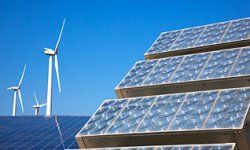Key Takeaways
- Wind turbines modernize the ancient practice of harnessing wind, converting kinetic energy into electricity, and supporting homes and businesses through integration with the electric grid.
- Hydroelectric dams leverage water pressure to generate electricity, contributing significantly to the global electricity supply with their capacity to produce vast amounts of power.
- Solar cells transform sunlight into electricity, offering a clean, renewable energy source that's adaptable in size and scale.
Would you buy a home without functioning power outlets? We've come to depend on electric power for many of our day-to-day activities. When there are outages, we feel the impact of that dependency, followed by a sense of relief when the power's back on again.
Electricity has helped us stay healthier, work more efficiently and live life around the clock. Because electricity has had such a positive influence on our lives, science and industry researchers are constantly finding ways to provide electric power more easily and inexpensively. As a result, innovations in electric power have made the industry cleaner and more efficient throughout its history, and made electric service available to millions of homes.
Advertisement
This article includes our top five picks from those innovations. We'll look at technology targeted to certain energy resources, and we'll check out the core components that give you access to those resources. To kick things off, let's look a current innovation for a long-used renewable resource.
